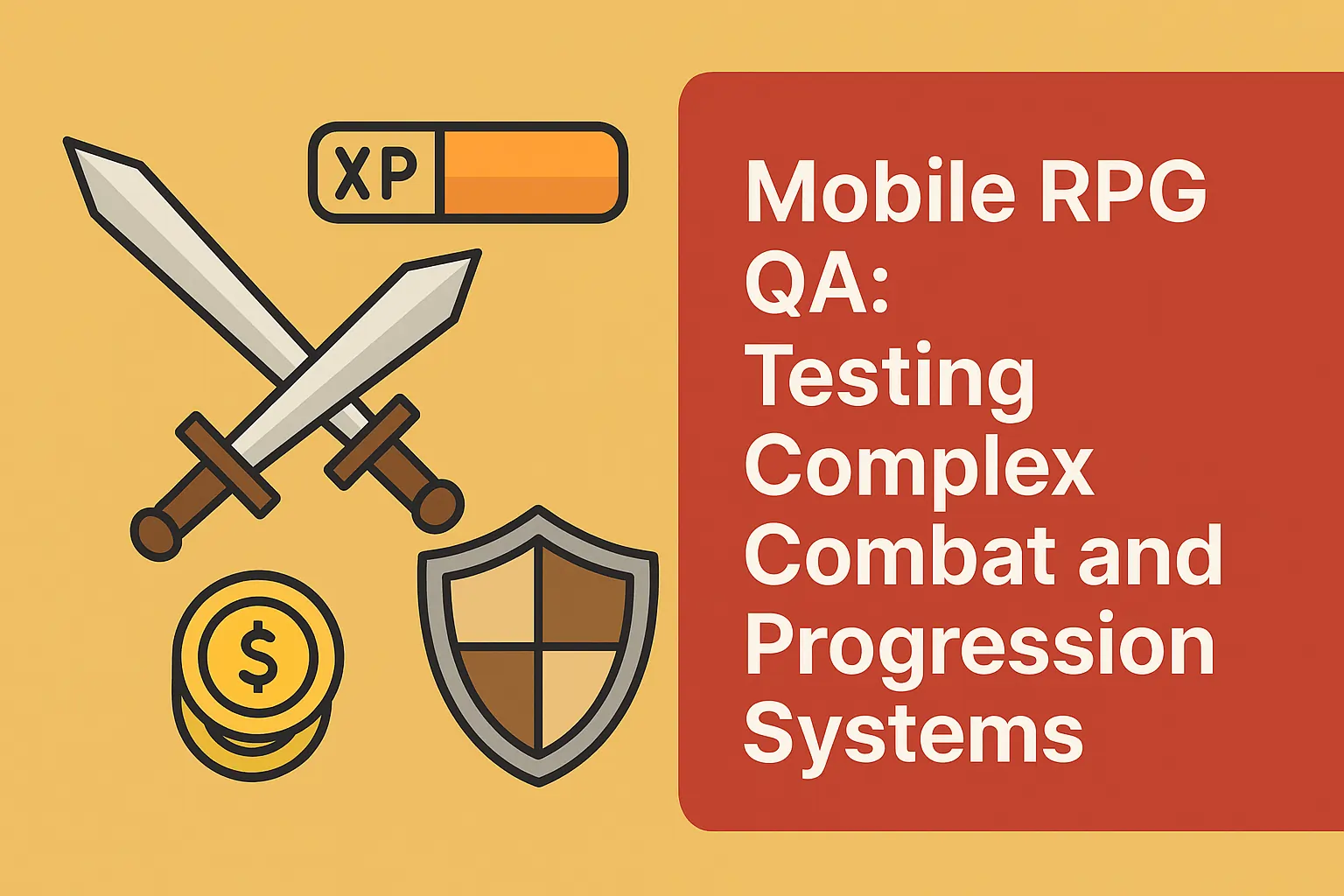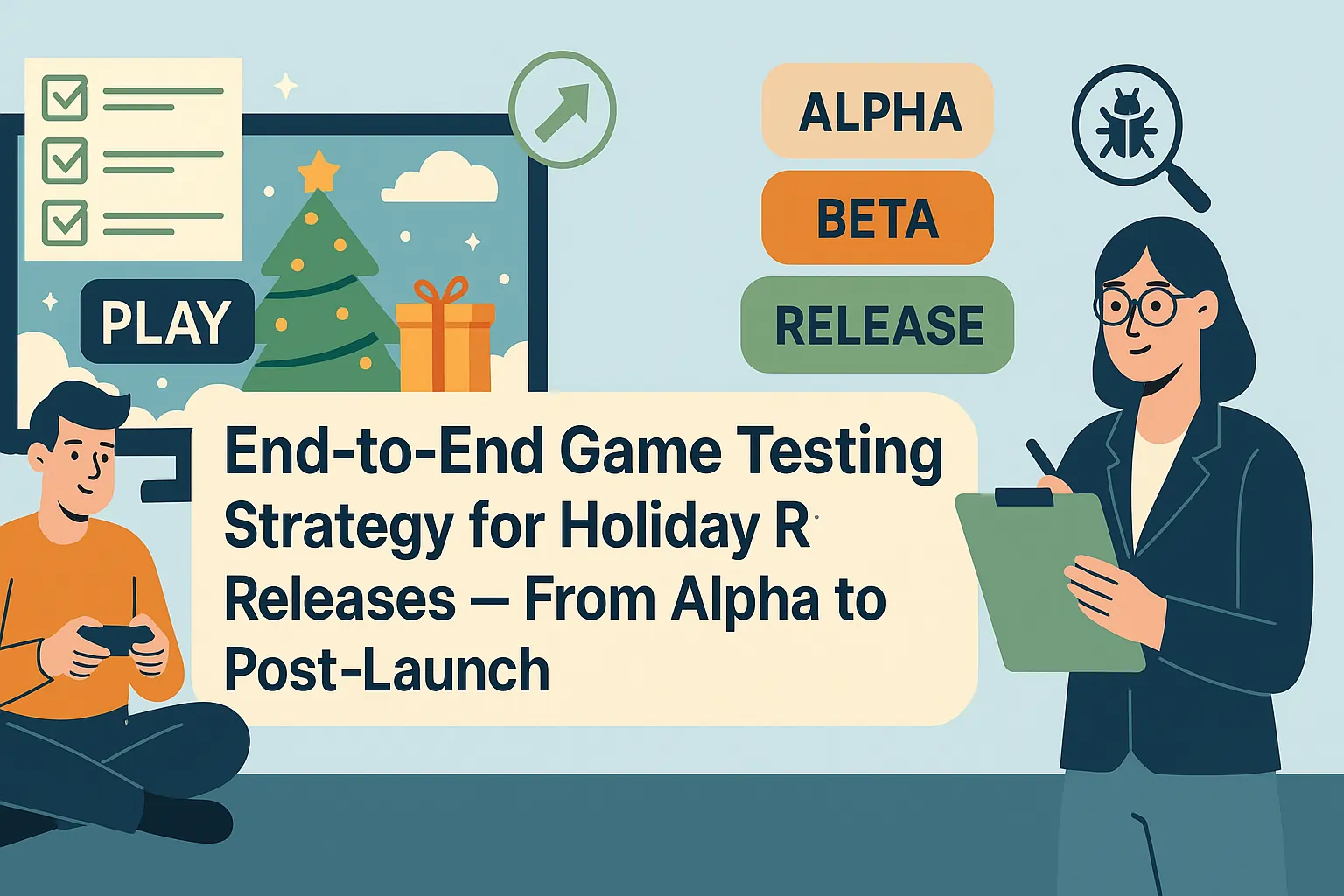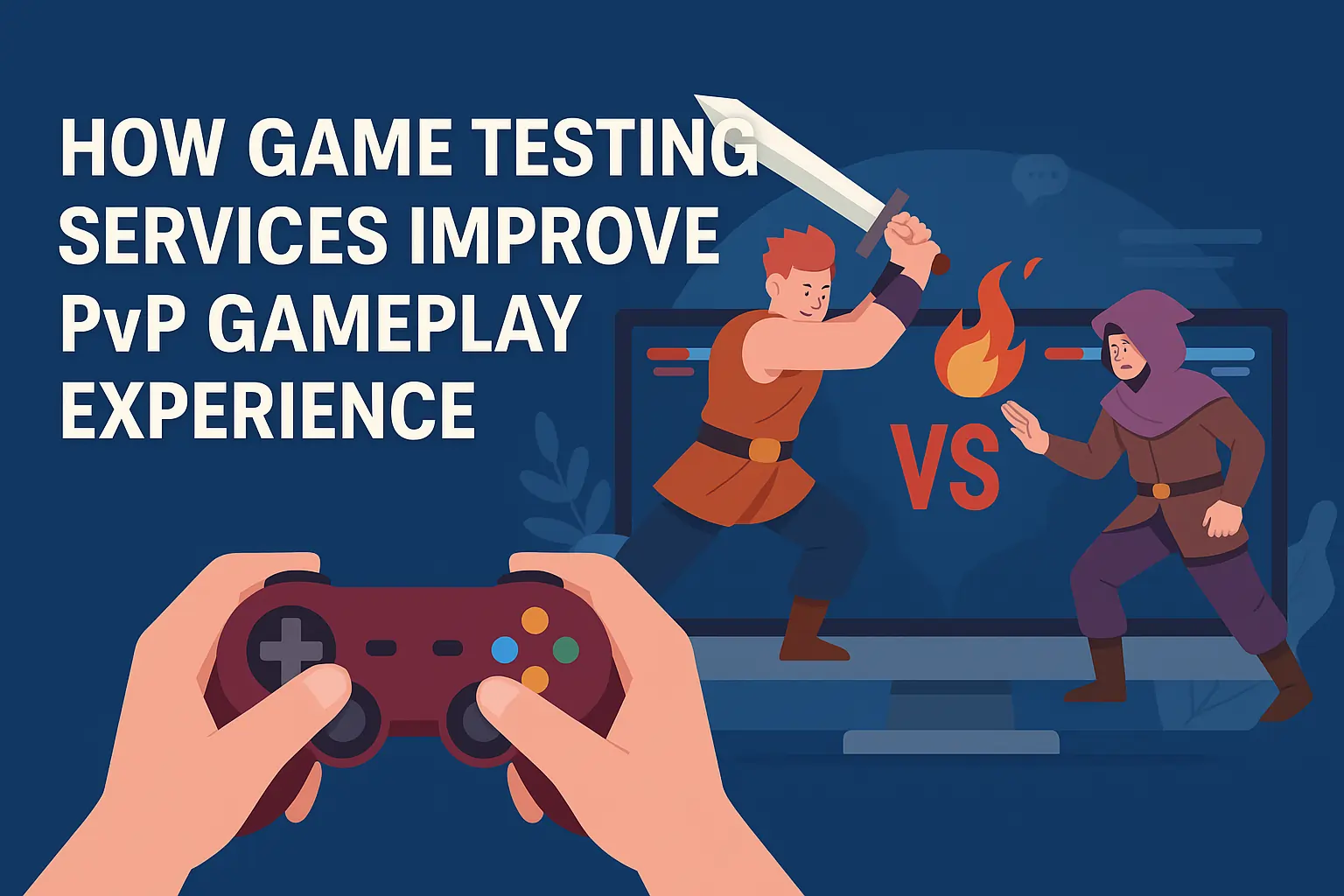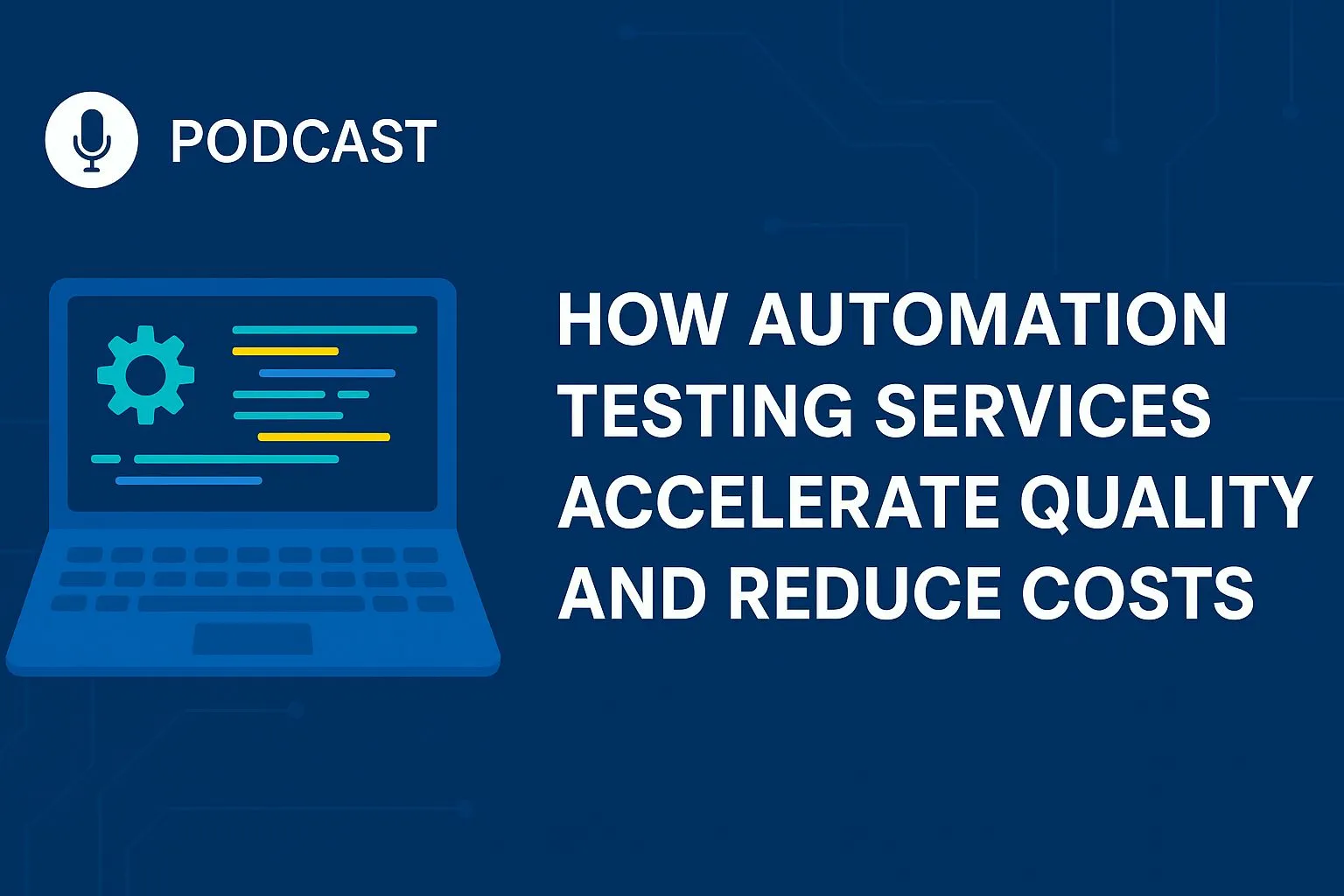How Quality Assurance Game Testers Handle Multiplayer Game Testing
Multiplayer games offer dynamic and immersive experiences where players from around the globe connect to interact in real time. To ensure these experiences run seamlessly, quality assurance game testers play a crucial role in identifying and addressing bugs, optimizing performance, and ensuring the overall quality of every gameplay element. Video game quality assurance is essential to guarantee that multiplayer games meet the highest standards. This blog will dive into how game QA testers approach testing for multiplayer games and share insights on the tools and strategies that contribute to a smooth gaming experience. From QA game development experts to game testing companies, we will explore how professionals handle the complexities of multiplayer game testing. Whether it’s QA in video games, game quality assurance, or other aspects of the testing process, this blog will give you a comprehensive look at the world of multiplayer game testing.
The Complexity of Multiplayer Game Testing for Quality Assurance Game Testers
What Makes Multiplayer Games Challenging for Quality Assurance Game Testers?
Multiplayer games are significantly more complex than single-player games due to the following factors:
Network Dependencies
Multiplayer games heavily rely on real-time network communication, which makes them more vulnerable to disruptions. Game QA testers simulate various network conditions, such as high latency or packet loss, to ensure the game remains playable under diverse conditions. This testing can also help identify problems specific to QA in video games, where performance may fluctuate based on network changes.
Player Interactions
Multiplayer games involve interactions between players, such as communication, trades, and cooperative play. QA play testers ensure that these interactions happen without issues, ensuring fairness and consistency in the experience. This requires deep expertise in video game QA to verify that the game’s mechanics and interactions function as intended.
Server Infrastructure
Ensuring that servers handle the stress of large player bases is another significant challenge. Quality assurance testers for video games ensure that server load balancing, synchronization, and crash recovery systems are effective.
Cross-Platform Compatibility
In today’s gaming world, multiplayer games are played across a variety of platforms such as PCs, consoles, and mobile devices. QA in video games ensures that players, regardless of their device, have a consistent and seamless experience. Achieving this requires detailed testing by game QA testers who specialize in different platforms, from mobile games to consoles, ensuring smooth functionality and performance across the entire gaming ecosystem.
The Purpose of QA in Video Games
The primary goal of game QA testers is to guarantee that multiplayer games are free from bugs, work reliably across all devices, and deliver a smooth, uninterrupted experience to players. This includes tackling issues related to gameplay mechanics, network stability, and overall system compatibility. Through rigorous testing, video game QA testers help produce a high-quality final product. Their work, in collaboration with QA game development professionals, fine-tunes the game’s features to ensure an optimal and enjoyable user experience for players across all platforms.
Key Phases of Multiplayer Game Testing by Quality Assurance Game Testers
1. Pre-testing preparation by Quality Assurance Game Testers
Environment Setup for Game Development QA
Before the testing process can even begin, game development QA teams must create test environments that mimic real-world player conditions. These environments are critical in testing various scenarios such as network disruptions, geographic region-based play, and platform-specific performance. QA play testers prepare multiple devices, including mobile phones, consoles, and PCs, to ensure compatibility across devices.
Test Plan Creation for Game QA Jobs
To guide the testing process, a detailed test plan is crafted by quality assurance game testers for video games. This plan outlines the scope of testing, the methods used, and the tools required to test various gameplay features, such as:
- Multiplayer matchmaking systems
- In-game communication (chat and voice)
- Player connections and disconnections
A well-defined plan helps align all testing objectives and ensures that no area of the game is overlooked during testing.
2. Functional Testing by Video Game QA Testers
Matchmaking and Player Interactions
One of the first tests for video game QA testers is validating the game’s matchmaking system. Ensuring that players are paired correctly based on criteria like skill level, geographic region, and platform compatibility is crucial. QA in video games ensures that these systems are fully functional, so players experience fair and balanced competition.
Additionally, testers assess player interactions, such as voice chat, trade systems, and combat mechanics, to ensure they perform as intended. The goal is to create a seamless multiplayer environment where players interact without issues.
Game Lobbies and Connectivity
Another key part of game quality assurance involves testing game lobbies. QA play testers ensure players can join or create game lobbies without issues. Testing also includes evaluating the connection between players, as well as ensuring that disconnections are handled appropriately and players can rejoin seamlessly.
3. Performance Testing for Quality Assurance Game Testers
Server Load and Stress Testing
Testing the capacity of game servers to handle a large volume of players is a fundamental part of video games QA. Game development QA teams create simulations that mimic thousands of simultaneous players to evaluate the server’s ability to maintain stability and scalability. This testing ensures that the server can endure peak traffic without crashing or experiencing significant slowdowns. Furthermore, QA game testers check that critical player information, such as progress and game statistics, are correctly stored even when the server is under heavy load.
Latency and Network Conditions Testing
For a seamless multiplayer experience, maintaining stable network performance is essential. Video game QA testers simulate various network conditions, including high latency and packet loss, to determine how these factors affect the gameplay. It’s important to test the game’s performance under network stress to ensure that players continue to have a smooth and uninterrupted experience, even when there are delays or connectivity challenges. Quality assurance testers for video games create these network disruptions to assess how the game behaves and ensure it remains stable during unfavorable conditions.
Advanced Techniques Used by Quality Assurance Game Testers
1. Automated Testing in Game QA
Automated testing is widely used by game QA testers to handle large-scale multiplayer simulations. This allows testers to automate repetitive tasks, such as sending messages or joining lobbies, across multiple devices and platforms. It speeds up the testing process while helping to identify scalability issues before the game is launched.
2. Network Simulation Tools in Game Quality Assurance
Tools like Charles Proxy or Wireshark are used to simulate different network conditions that may affect game performance. Video game QA testers use these tools to monitor data traffic and pinpoint issues such as packet loss, lag, or errors that could affect gameplay. These insights are crucial for identifying and resolving networking problems before release.
3. Cross-platform testing for QA in Video Games
With many multiplayer games supporting multiple platforms, it’s essential to ensure that the game functions properly across various devices. This is a critical focus of game development QA. QA game testers carry out cross-platform testing to verify that gameplay remains consistent, whether players are on PCs, mobile devices, or consoles. This includes ensuring that key features such as matchmaking, controls, and player progression work seamlessly across all platforms, providing a unified experience for all players, no matter what device they use.
Collaboration Between Developers and QA Teams
Early Involvement in Game Development QA
Integrating quality assurance game testers early in the game development process is crucial for detecting and addressing potential issues before they become significant problems. Involving video game QA testers from the beginning allows them to gain a clear understanding of the game’s design objectives and contribute to creating effective testing strategies. This early collaboration ensures that testers can help refine gameplay mechanics, identify bugs, and ensure a smooth development process, ultimately leading to a better-quality product.
Significance of Cross-Functional Collaboration
When game QA testers collaborate closely with developers from the start, it helps align the testing efforts with the overall development goals. This proactive approach enables developers and testers to work together efficiently, minimizing delays and preventing major issues from arising later in the development cycle. By addressing problems early, the final product is of higher quality and meets the expectations of both developers and players.
Real-Time Testing for Multiplayer Dynamics
Testing Player Interactions and Matchmaking
Multiplayer games thrive on player interactions, whether cooperative or competitive. Game QA testers focus on testing matchmaking systems and ensuring that players are matched based on criteria like skill level and platform compatibility. Video games QA professionals assess how video game QA testers validate game features, such as communication systems, trade mechanics, and combat interactions, ensuring that these elements are functioning seamlessly for all players.
Ensuring Fair Play and Balance
QA game testers work to ensure fairness and balance within the multiplayer experience. They assess various player interactions, including voice chat, team mechanics, and trade systems, to ensure these elements are smooth, efficient, and free from glitches or unfair advantages.
Integration of New Technologies for Efficient Testing
Adapting to Emerging Technologies in Video Games
With the rapid advancements in gaming technologies, game QA testers must continuously update their testing approaches to keep pace. New innovations such as cloud gaming, virtual reality (VR), and ultra-high-definition (HD) graphics require game development QA professionals to adopt cutting-edge tools and techniques. These testers are integral in ensuring that multiplayer games perform optimally on newly emerging platforms, adapting their processes to test on different environments and technology setups effectively.
Meeting the Demands of Modern Gaming
In the ever-changing world of video game development, video game QA testers need to stay ahead of technological trends. Testing games that feature advanced capabilities, such as high-definition visuals or cloud-based gaming infrastructure, involves ensuring that these features function flawlessly across different systems. By simulating various conditions such as high-end graphics rendering or cloud network performance, QA in video games ensures that the new technologies enhance the overall gaming experience, offering seamless and immersive gameplay.
Essential Practices for Effective Game QA Testing
1. Early Engagement in Game Development QA
Bringing game QA testers into the development process at an early stage is vital for identifying potential issues before they escalate. By collaborating with developers from the start, video game QA testers ensure that testing efforts are aligned with the overall game design and development objectives. This early involvement allows testers to spot and address emerging problems quickly, improving the game’s overall quality.
2. Continuous and Regular Testing
Effective QA in video games relies on ongoing and frequent testing throughout the development cycle. This constant testing helps identify issues early on and ensures they are resolved promptly. The process of testing, gathering feedback, and refining the game in each iteration helps improve the game’s quality, creating a smoother experience for players with each development cycle.
3. Integrating Player Feedback into Video Game Quality Assurance
Incorporating feedback from beta testers and real players is a crucial aspect of game QA testers’ work. This feedback often highlights issues that may not have been found through internal testing, such as bugs, gameplay imbalances, or other concerns. By using player feedback to inform the testing process, video game quality assurance can address these issues effectively, ensuring a better overall gaming experience.
Conclusion
Quality assurance game testers are the backbone of multiplayer game development, ensuring that games perform well under different network conditions and across platforms. From video game QA jobs to specialized game quality assurance testing, QA testers apply their skills to ensure a flawless gaming experience. As multiplayer games grow more complex, QA game development and video game QA testers will continue to refine their processes, ensuring that games meet the highest standards for performance, security, and player satisfaction.











